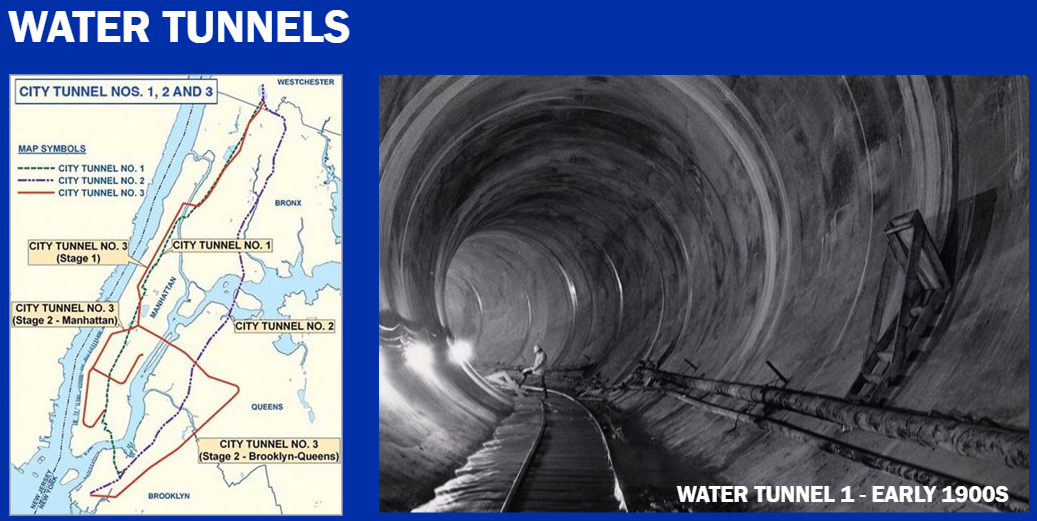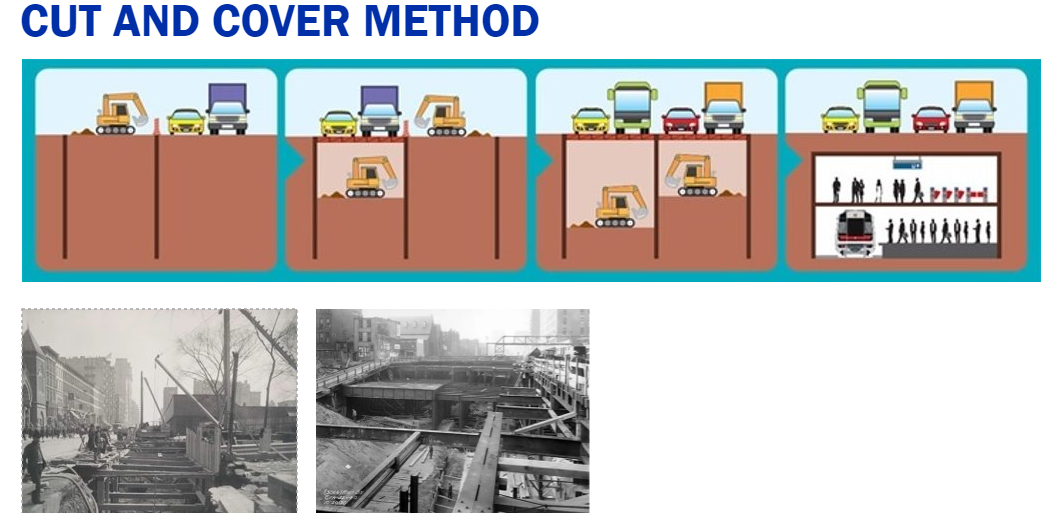
 Department of Design and Construction311
Department of Design and Construction311 Search all NYC.gov websites
Search all NYC.gov websites
Lunch and Learn: Why New York City Works - A Lesson in Civil Engineering
DDC is proud to offer the STEAM Virtual Lunch and Learn Series to high school students throughout New York City. Lunch and Learn is a one hour interactive presentation by DDC professionals speaking about their current role, career path and education. The series connects DDC professionals in the built environment, administration, construction management and design to students to share their experience and knowledge.
On Wednesday, July 15th, New York City students participated in the second virtual Lunch and Learn session with Resident Civil Engineer Madeline Skoblik. Ms. Skoblik’s presentation was on the History of New York City’s Infrastructure, ‘Why New York City Works: A Lesson in Civil Engineering.’
Students were treated to an engaging synopsis of NYC’s history, from its first European settlers to the modern-day melting pot NYC has transformed into. Her introduction to Civil Engineering included an overview of the city’s extensive water resource system, sewers, waste reduction/sanitation, public transportation (subways, and roads), bridges, utilities (gas, electric, steam, and communications (telephone, internet), and building structures. Her presentation concluded with an overview of DDC’s work in capital infrastructure construction. Ms. Skoblik described the day to day of working on large scale infrastructure projects throughout the 5 boroughs.
“I’m happy DDC is continuing to provide virtual learning sessions during this very difficult time. The topic of New York City’s history, especially the development of its complex infrastructure, has always been fascinating to me and I’m excited to share this knowledge with a new generation of students! Civil Engineering provides a roadmap to understanding the built environment and specifically buildings, bridges, roads, subway systems, sewer systems, water tunnels, utilities and more,” stated Ms. Skoblik.


Deputy Commissioner Lee Llambelis stated, “It underscores how Civil Engineering links to every part of our world. In that it is among the oldest branches of engineering, dating back to when humans first came together to create permanent settlements.”
Ms. Skoblik explained the operation of New York City’s water supply system which consists of a series of tunnels that transport water via gravity-flow. Tunnels 1 and 2 were completed by 1935 and have effectively never been shut down since their construction. Water tunnel number 3 is the largest capital construction project in New York City’s history and has been under construction since the 1970s. Madeline explained the cut and cover construction method which involves using excavation equipment to dig a large trench or rectangular hole in the ground which is then covered by a deck on which vehicles or pedestrians can continue to pass over as work continues underneath. This method is why so many lines run underneath streets and not underneath buildings in the city. She also answered questions from students about the City’s sewer and subway service.
Madeline Skoblik is a Resident Civil Engineer who joined the Department of Design and Construction in early 2016. As a DDC project manager for infrastructure construction projects in Manhattan, she’s headed several large projects as a resident engineer, most notably the plaza reconstruction project at Astor Place and Cooper Square. Madeline is currently an Engineer-In-Charge for the Gansevoort reconstruction project and an accelerated distribution watermain project. These projects includes work like water main replacement, catch basin construction, curb and sidewalk expansion, and street light and traffic adjustment work. She studied Civil Engineering at the University of Wisconsin-Madison and received her engineering degree in 2015.
About the NYC Department of Design and Construction
The Department of Design and Construction is the City’s primary capital construction project manager. In supporting Mayor de Blasio’s long-term vision of growth, sustainability, resiliency, equity and healthy living, DDC provides communities with new or renovated public buildings such as such as firehouses, libraries, police precincts, and new or upgraded roads, sewers and water mains in all five boroughs. To manage this $14 billion portfolio, DDC partners with other City agencies, architects and consultants, whose experience bring efficient, innovative and environmentally-conscious design and construction strategies to City projects. For more information, please visit nyc.gov/ddc


